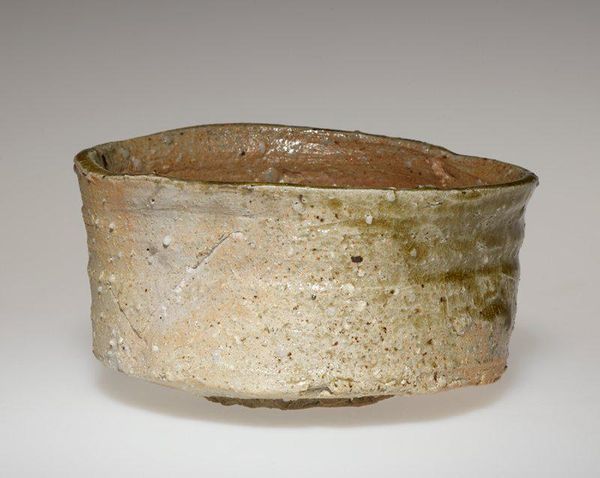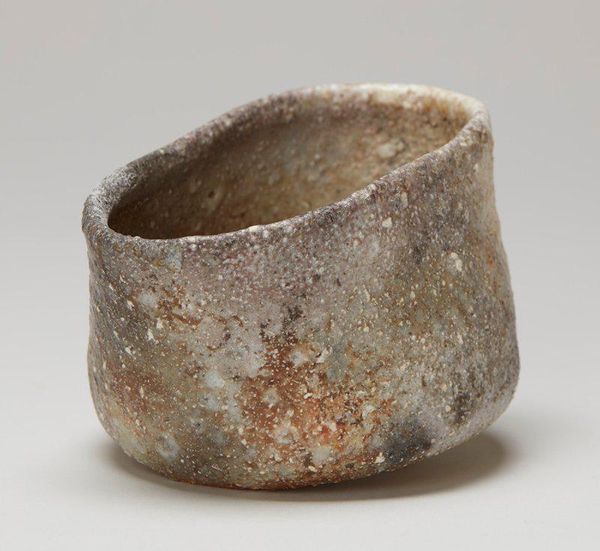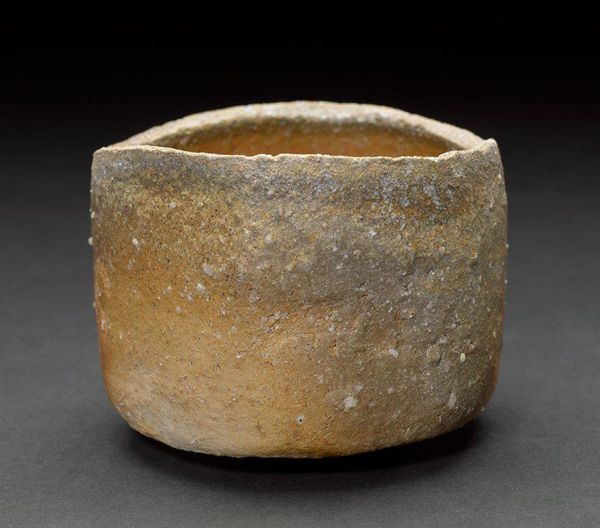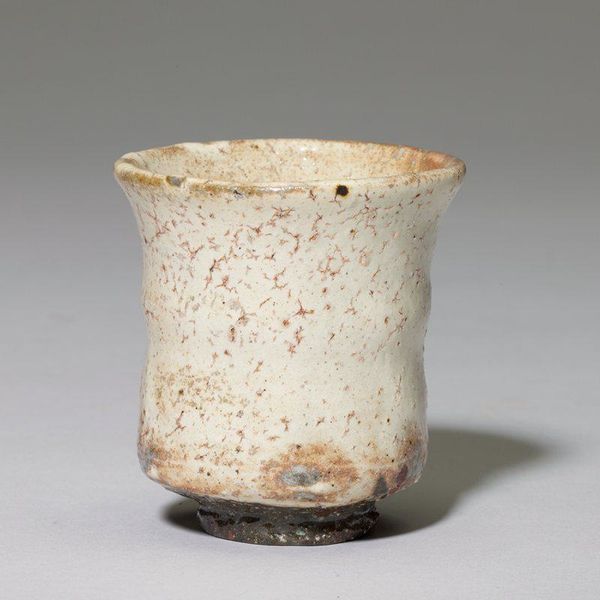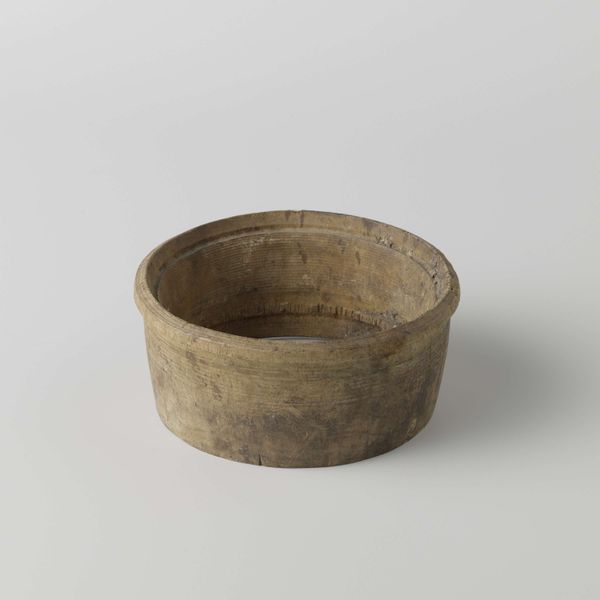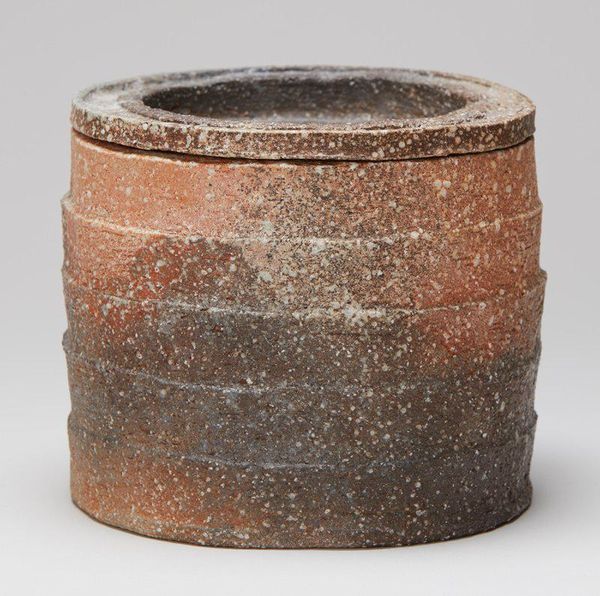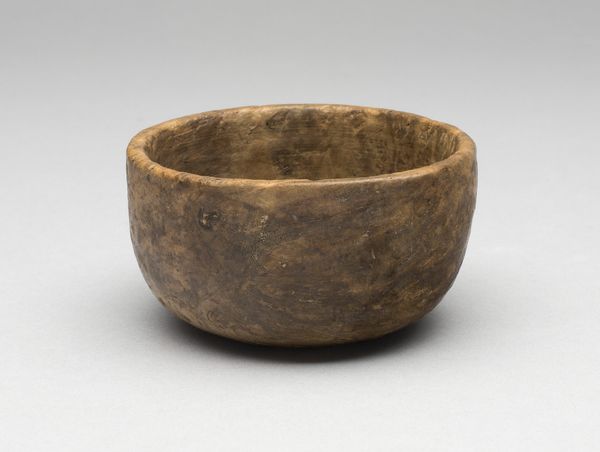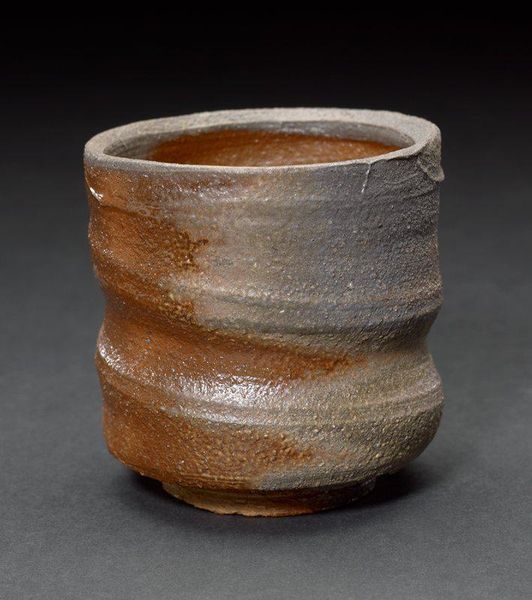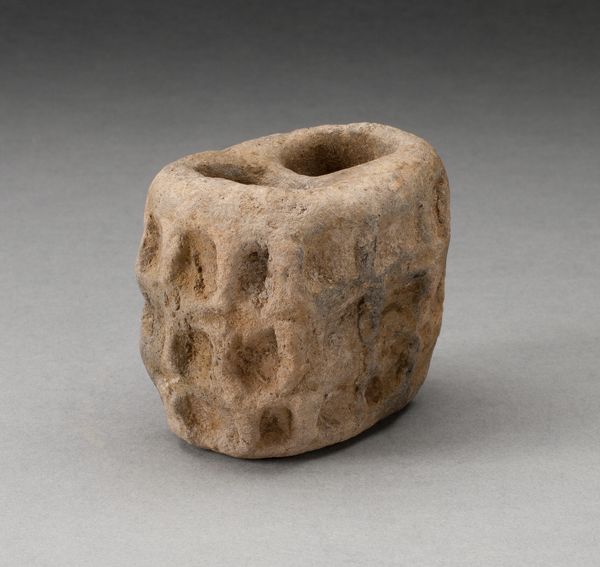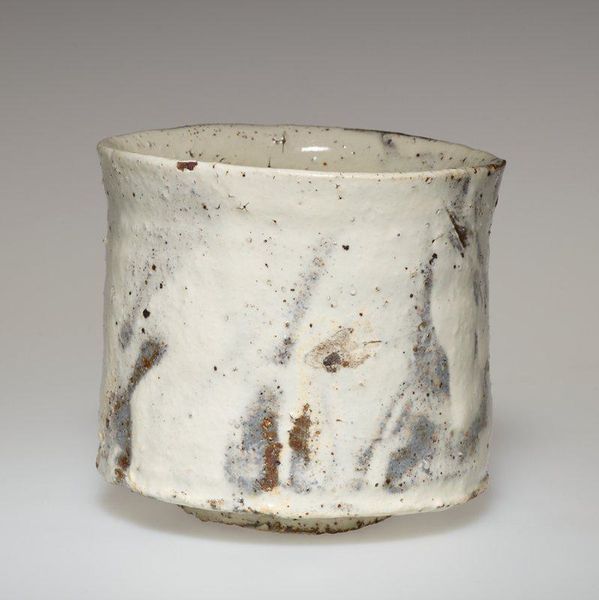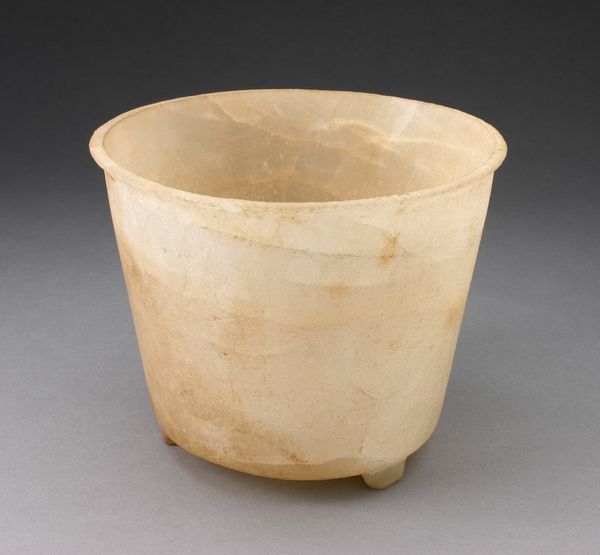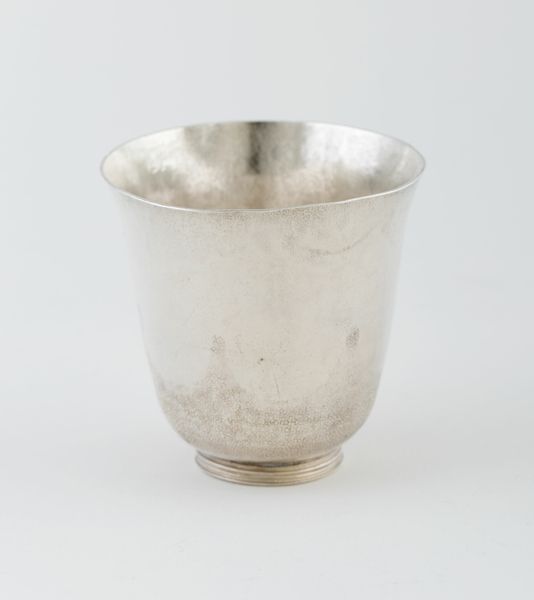
ceramic, earthenware
#
minimalism
#
asian-art
#
ceramic
#
abstract
#
earthenware
#
stoneware
Dimensions: 3 7/8 x 4 1/8 x 4 1/8 in. (9.84 x 10.48 x 10.48 cm)
Copyright: No Known Copyright
Editor: This is a tea bowl, or chawan, by Ishida Chihiro, created around the 20th century. It’s made of earthenware. I’m immediately struck by its rough texture and irregular form. It feels very raw and natural. How do you interpret this work, especially considering its cultural context? Curator: I see in this chawan a powerful connection to wabi-sabi philosophy, which embraces imperfection and impermanence. Can we consider how the artist, perhaps deliberately, resisted the pursuit of perfect symmetry or flawless surfaces? Think of this roughness as a subtle critique of standardized beauty, even a quiet act of defiance. Editor: So, the imperfection is the point? How might that connect to contemporary art? Curator: Exactly. Think about artists today who challenge conventional notions of beauty and craftsmanship. They are, in a sense, continuing a dialogue that extends back centuries. This chawan becomes not just a functional object, but a symbol of resistance against oppressive expectations of conformity and uniformity. Can you imagine the socio-political climate in which this aesthetic preference emerged? Editor: I hadn’t thought about it that way. So the bowl is more than just an object, it is a statement. Curator: Indeed! Its existence questions prevailing social and aesthetic values. Its value stems from how it redefines and expands traditional notions of what we consider art. Editor: It makes me reconsider what makes a “good” object and challenges the status quo, which I suppose is what activist art is all about. Curator: Exactly. Thank you for your insights!
Comments
No comments
Be the first to comment and join the conversation on the ultimate creative platform.
